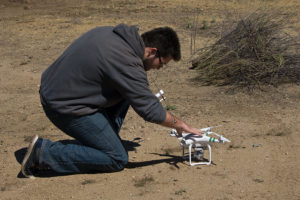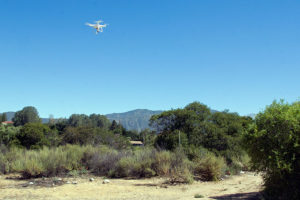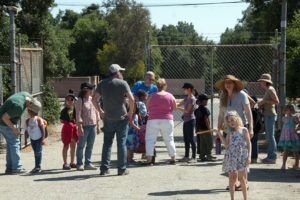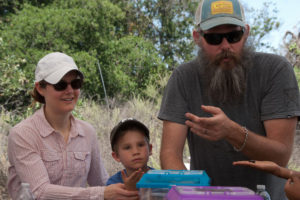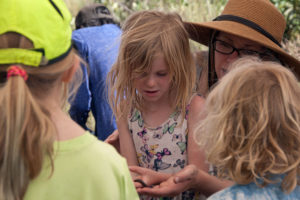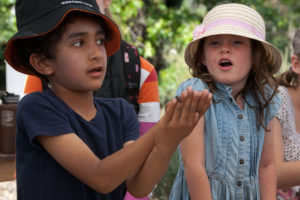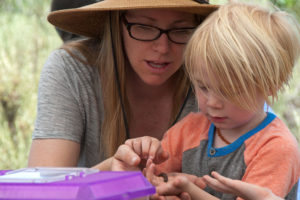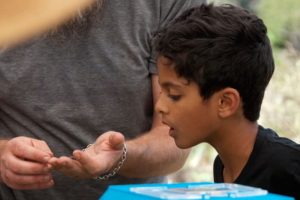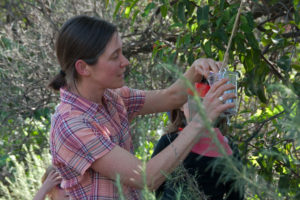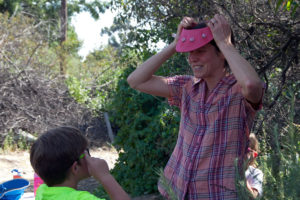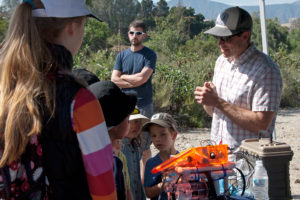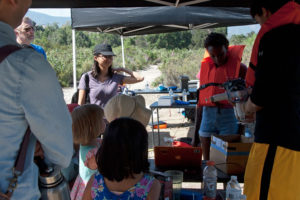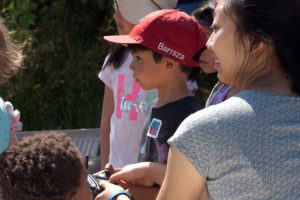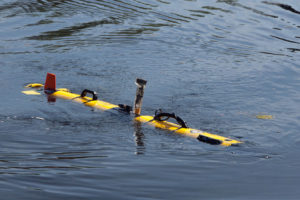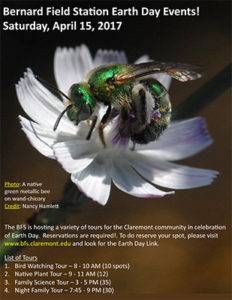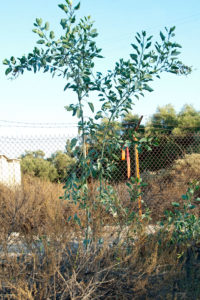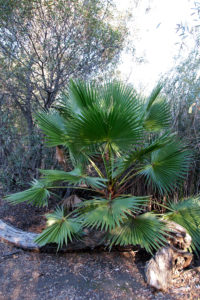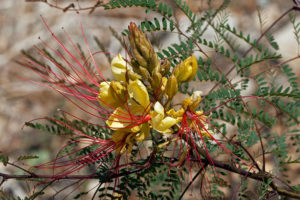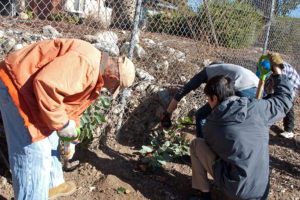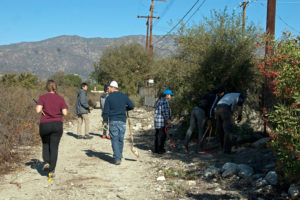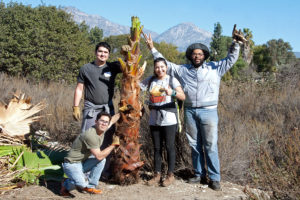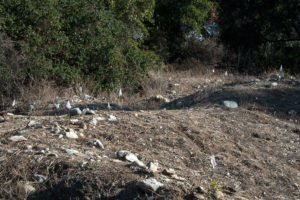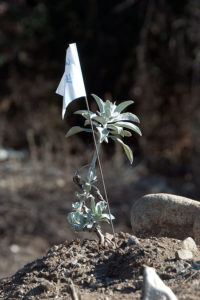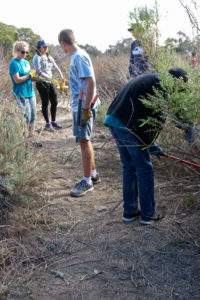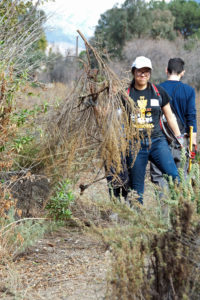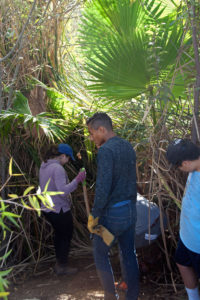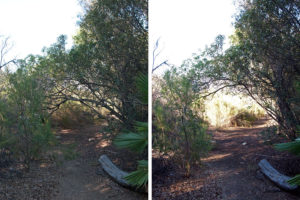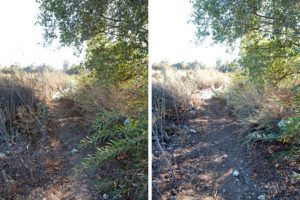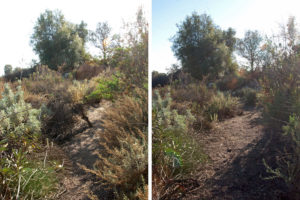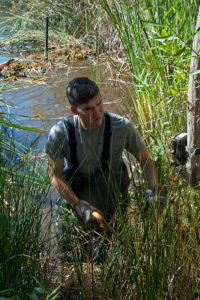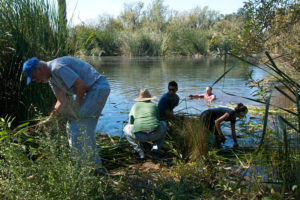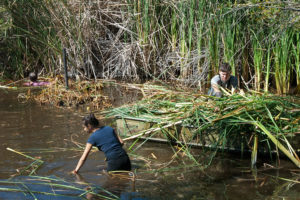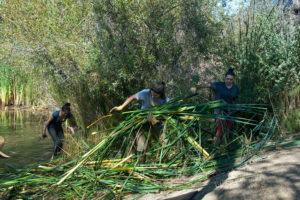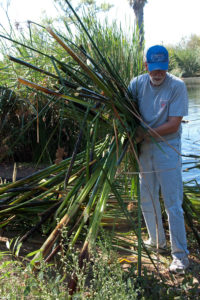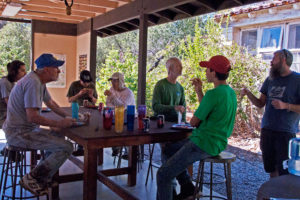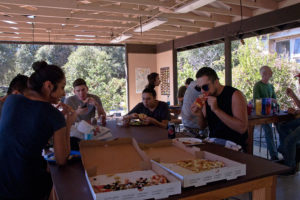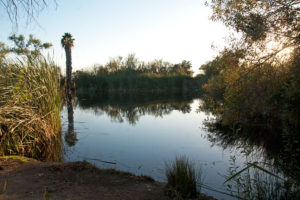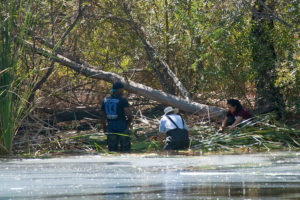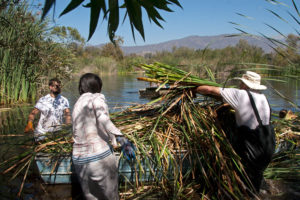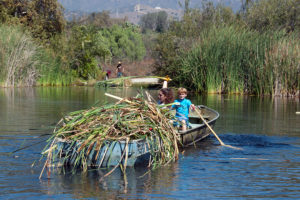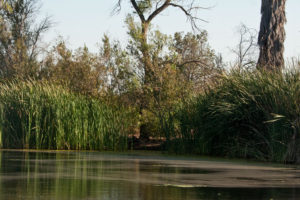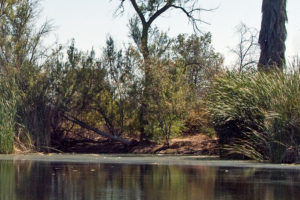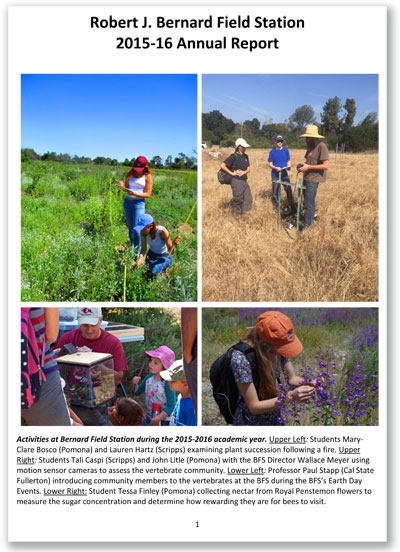Late in the afternoon of May 18, a fire started inside the BFS fence along College Avenue. Although the fire was thought to have been quickly extinguished, the wind came up and blew embers east so that the fire quickly spread to pHake Lake and along the south shore of the lake.
The fire eventually covered about four acres before it was stopped just east of the lake, thanks to an outstanding response from the Los Angeles County Fire Department. Fortunately, no one was injured and no structures were damaged. The native sage scrub, which is fire-adapted, will recover.
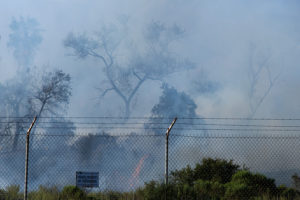
The area south of pHake Lake enveloped in smoke and flames. ©Nancy Hamlett.
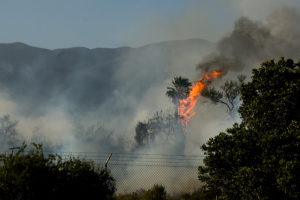
Dead palm fronds in flames. ©Nancy Hamlett.
The Los Angeles County Fire Department responded quickly, summoning a dozen fire engines from surrounding communities and three water-dropping helicopters.
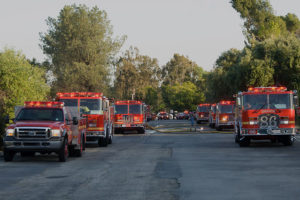
Fire engines and other emergency vehicles on College Avenue. ©Nancy Hamlett.
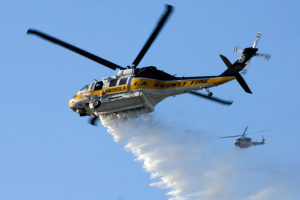
Two water-dropping helicopters. ©Nancy Hamlett.
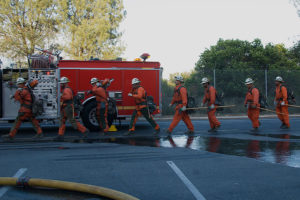
Fire crews heading into the field station. ©Nancy Hamlett.
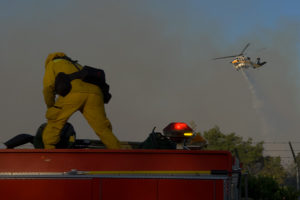
A firefighter manning the hose while a helicopter drops water. ©Nancy Hamlett.
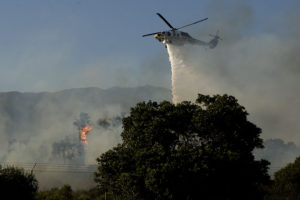
A helicopter dropping water on the fire. ©Nancy Hamlett.
As the wind blew embers, new sites ignited.
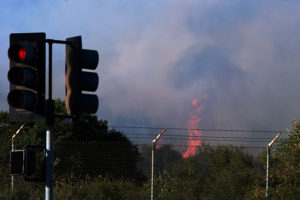
Flames leaping up on the south shore of the lake. ©Nancy Hamlett.
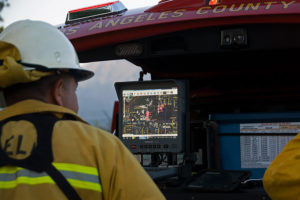
At the command center, a computer screen displays the location of each firefighter. ©Nancy Hamlett.
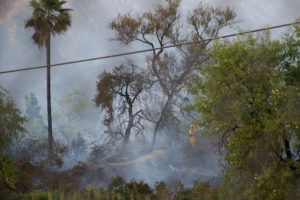
A firefighter on the south shore of pHake Lake. ©Nancy Hamlett.
On Friday, a small group was allowed in to assess damage as fire crews continued to work to ensure that no hot spots remained.
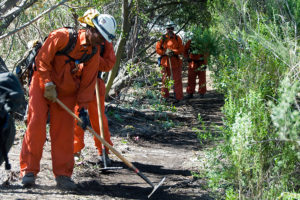
Firefighters clearing the lake trail and checking for hotspots. ©Nancy Hamlett.
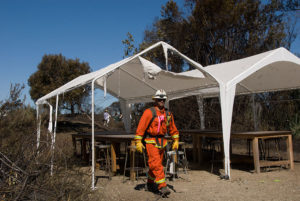
A firefighter walking through the damaged temporary outdoor classroom. ©Nancy Hamlett.
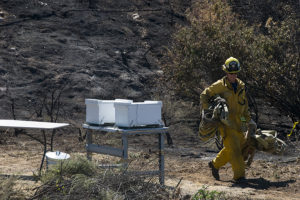
A firefighter walking past the Donaldson-Matasci lab bee hives, which were saved. ©Nancy Hamlett.
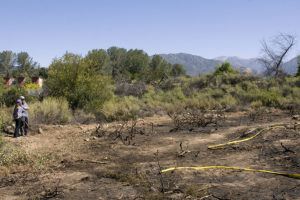
BFS Lead Dean Audrey Bilger and BFS Director Marty Meyer looking at the site where the fire started. ©Nancy Hamlett.
The cause of the fire is unknown, but it must have resulted from human activity since there was no lightning or other natural cause that could have started the fire. This is, alas, too typical of Southern California as a whole, where 95% of wildfires are caused by humans (Syphard et al. 2007). The resulting increased frequency of wildfires can mean that even in fire-adapted plant communities, some organisms have insufficient time to re-establish between fires (Koh and Levins 2010).
The early May date for this fire – much earlier than the start of the traditional fire season in Southern California – may in part reflect cumulative effects of the multi-year drought and on-going climate change, a topic addressed by Professor Char Miller, Pomona College, in a commentary in the Daily Bulletin. Climate change models predict that the area burned in California will increase over the next 30 years. Recent work, however, indicates that a substantial portion of the predicted increase is actually due to human activity rather than climate change per se (Mann et al. 2016).
Understanding the interplay of these various factors is obviously important for managing fire in Southern California, especially at the urban-wildland interface. We at the Claremont Colleges are fortunate that students have a resource like the BFS, where they can study these issues.
References:
- Koh SW and Levins S. 2010. Wildfires and the metapopulation dynamics of saproxylic lichens. Southern California Conferences for Undergraduate Research.
- Mann ML, Batllori E, Moritz MA, Waller EK, Berck P, Flint AL, et al. 2016. Incorporating Anthropogenic Influences into Fire Probability Models: Effects of Human Activity and Climate Change on Fire Activity in California. PLoS ONE 11(4): e0153589. https://doi.org/10.1371/journal.pone.0153589
- Syphard AD, Radeloff VC, Keeley JE, Hawbaker TJ, Clayton MK, Stewart SI, et al. 2007. Human influence on California fire regimes. Ecol Appl. 17: 1388–1402. http://silvis.forest.wisc.edu/file/5443/download?token=5iCtdcOI
Tags: fire
